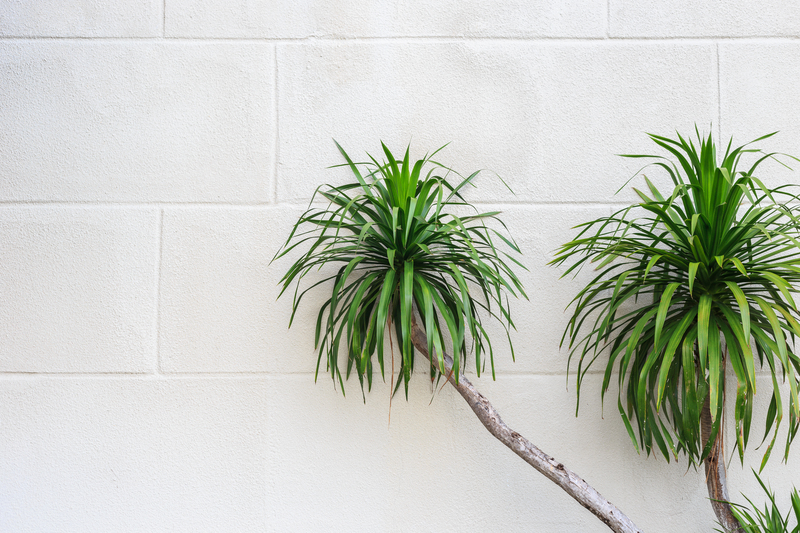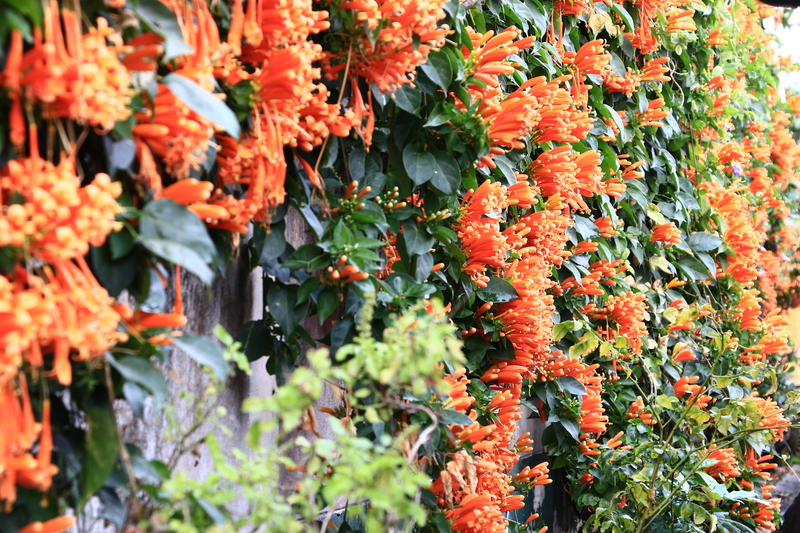Start Your Journey from Neglect to Garden Beauty
Posted on 10/06/2025
Start Your Journey from Neglect to Garden Beauty: Transforming Your Outdoor Space
Is your garden looking less like Eden and more like the wilds of neglect? Don't worry--you're not alone. Many homeowners and renters feel overwhelmed at the sight of weeds, patchy grass, or faded flower beds. The good news is, you can begin transforming your neglected yard into a flourishing haven with simple steps and dedication. In this guide, you'll discover actionable advice, creative landscaping ideas, and practical garden tips that will help you start your journey from neglect to garden beauty.

The Importance of Restoring Garden Spaces
A beautiful garden is more than just an aesthetic delight. It boosts property value, provides a sanctuary for relaxation, and even improves local biodiversity. Moving your outdoor space from neglect to garden beauty revitalizes your environment and has numerous emotional and physical health benefits. In today's fast-paced world, nurturing a green space, even a small one, reconnects you with nature and offers a sense of accomplishment.
Why Do Gardens Fall into Neglect?
Understanding the root causes of neglect is the first step toward positive change. Common reasons for a neglected garden include:
- Lack of time or energy due to busy lifestyles
- Uncertainty about where and how to start
- Limited budget for gardening supplies and plants
- Poor soil conditions or persistent weed growth
- Previous garden failures leading to discouragement
With the right guidance and mindset, anyone can reverse neglect and create a vibrant outdoor retreat.
Step-by-Step Guide: From Neglected Yard to Garden Paradise
Ready to embark on your garden transformation journey? Follow these comprehensive steps to ensure lasting results and stunning outdoor beauty.
1. Assess and Plan Your Space
- Survey your garden: Walk around your yard and *take notes* on issues such as dead patches, overgrown areas, and potential hazards (like broken fencing or sharp debris).
- Set realistic goals: Decide whether you want a flower garden, vegetable patch, or a multifunctional outdoor living area.
- Sketch a basic map: Illustrate current conditions and outline your dream layout--including seating zones, beds, and pathways.
2. Clear the Clutter and Prepare the Area
- Remove debris: Pick up fallen branches, dispose of broken pots, and clear rubbish. This first step immediately makes a big difference.
- Tackle weeds and overgrowth: Use a combination of hand weeding, mulching, and selective digging to reclaim lost territory.
- Repair structures: Mend fences, plant supports, or raised beds to keep everything tidy and safe.
3. Test and Improve Your Soil
Healthy plants start with healthy soil. Undertake a soil test (kits are available online or at garden centers) to measure pH and nutrient levels. You may need to:
- Add compost or organic matter to enrich depleted soil
- Apply mulch to conserve moisture and suppress weed regrowth
- Consider raised beds for particularly poor ground
4. Choose Plants Suited to Your Climate and Lifestyle
- Low-maintenance plants: Research perennials, native species, and drought-resistant varieties for an easier-care garden.
- Mix of heights and textures: Blend ground covers, shrubs, and taller plants for year-round interest and structure.
- Seasonal color: Plan for blooms or foliage that provide visual appeal in every season.
5. Start Planting and Designing
- Begin with the backbone plants: These could be trees, shrubs, or major feature plants that anchor your design.
- Fill with layers: Intersperse with smaller flowers, bulbs, or herbs.
- Install edging: Define garden beds with brick, stone, or eco-friendly materials for a crisp finish.
Tips for Maintaining Your Garden's Beauty
Maintaining your outdoor transformation is just as crucial as the initial overhaul. Here are expert tips to sustain your journey from neglect to garden beauty:
- Water wisely: Early morning is best to reduce evaporation; use mulch to retain moisture.
- Weed regularly: Prevent weed infestation by adopting a little-and-often approach.
- Prune with purpose: Remove dead or diseased growth to promote a healthy structure and vibrant blooms.
- Feed your plants: Apply fertilizers or soil conditioners seasonally to maintain growth and vitality.
- Monitor for pests and diseases: Regularly inspect leaves and stems, taking eco-friendly action at the first sign of problems.
Garden Design Ideas to Inspire Your Transformation
Unleash your creativity with these garden design concepts, perfect for any size or style of yard.
- Cottage Garden: Brimming with colorful flowers, local herbs, and meandering paths for a romantic escape.
- Modern Minimalist: Use sleek lines, gravel, and sculptural plants for a contemporary vibe.
- Wildlife Haven: Add a pond, native shrubs, and wildflowers to support birds, bees, and butterflies.
- Edible Oasis: Mix vegetables, fruit trees, and culinary herbs with annual blooms for beauty and bounty.
- Zen Retreat: Incorporate bamboo, water features, and natural stone for a peaceful sanctuary.
Common Mistakes to Avoid on Your Garden Transformation Journey
Turning a neglected space into a gorgeous haven can have its pitfalls. Steer clear of these common mistakes:
- Over-planting: Avoid crowding plants too close, which can lead to competition for water and nutrients.
- Neglecting soil preparation: Healthy soil is the foundation--skipping this step risks future problems.
- Ignoring sunlight requirements: Position shade-loving plants away from harsh sun, and vice versa.
- Giving up too soon: Remember, patience is key. Even the most beautiful gardens take time to establish.
Budget-Friendly Tips for Garden Makeovers
Transforming your garden doesn't have to be expensive. Consider these cost-effective strategies:
- Grow from seed or cuttings: Instead of mature plants, start with packets or shared clippings from friends.
- Repurpose materials: Use old pallets for planters or create paths from salvaged bricks.
- Shop seasonally: Buy plants during end-of-season sales for significant savings.
- DIY decor: Paint old pots, create homemade bird feeders, or craft stepping stones together with family.
Benefits of Moving from Neglect to Garden Beauty
The rewards for revitalizing your outside space are much greater than just visual appeal. Experience:
- Emotional well-being: Gardening reduces stress, anxiety, and depression while boosting happiness.
- Health and fitness: Tending a garden offers gentle physical activity and a dose of vitamin D.
- Environmental advantages: Gardens absorb CO2, promote pollinators, and support ecological balance.
- Family and community connections: Shared garden projects bond neighbors and loved ones together.
Building Lasting Garden Beauty: Sustainability and Longevity
A beautiful garden is a living legacy. Here's how to keep your outdoor space thriving for years to come:
- Choose native plants: Adapted to your local climate, they require fewer resources and support regional wildlife.
- Collect rainwater: Set up barrels for eco-friendly irrigation and lower water bills.
- Compost kitchen waste: Turning scraps into soil boosts fertility and reduces landfill.
- Limit chemical use: Embrace organic solutions for pest and disease management whenever possible.
- Keep learning: Join gardening groups, read up-to-date books, and experiment to grow your skills over time.

Conclusion: Begin Today--Your Beautiful Garden Awaits
Starting your journey from neglect to garden beauty is a deeply rewarding experience. With patience, creativity, and consistent care, your once-forgotten yard can blossom into a personal oasis and a source of pride. Whether you're dreaming of vibrant flowers, delicious homegrown produce, or a tranquil place to unwind, the first step is often the hardest--but also the most important.
Begin today, and soon you'll marvel at how far your garden has come!
Frequently Asked Questions: Neglect to Garden Beauty
-
How long does it take to turn a neglected garden around?
Depending on your starting point and level of enthusiasm, you can see noticeable improvements within a few weeks! For full transformation, plan for one full growing season. -
What should I do first--plant or clean?
Always start with a thorough clean-up. Remove debris and weeds before introducing new plants. -
Can I get a beautiful garden with little time each week?
Yes! Choose low-maintenance plants, rely on mulch, and adopt a little-and-often routine to maintain results. -
What affordable plants are best for beginners?
Try marigolds, calendula, salvia, lavender, or native perennials for easy success and lovely blooms.
Ready to transform your green space? The journey from neglect to garden beauty is within your reach--one trimmed bush, planted flower, and weed-free bed at a time. Let your story of renewal inspire others, and soon, your garden will become a living testament to patience, creativity, and care.

